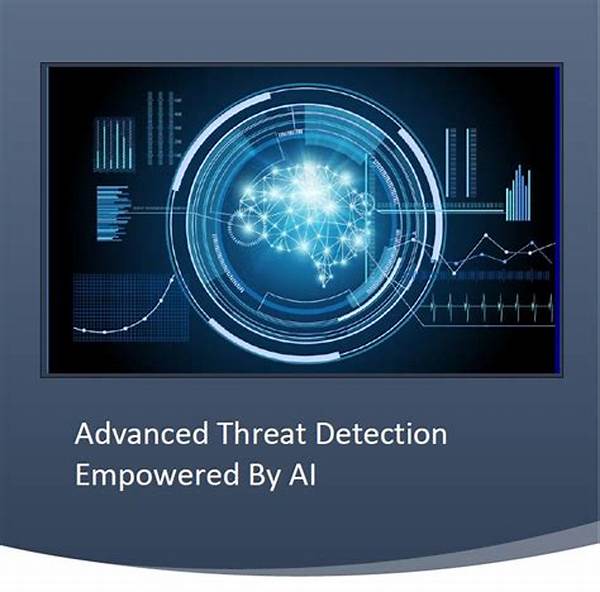In the ever-evolving landscape of cybersecurity, advanced threat detection technologies have emerged as pivotal tools in safeguarding sensitive data and critical infrastructure. As cyber threats become increasingly sophisticated, the necessity for more refined and effective detection systems grows in parallel. This article delves into the intricacies of such technologies, exploring their functionalities, benefits, and future implications. By understanding these advanced systems, organizations can better prepare and defend against the myriad of cyber threats that pervade the digital realm.
The Evolution and Importance of Advanced Threat Detection Technologies
Advanced threat detection technologies have undergone significant evolution to meet the demands of an increasingly digital world. These technologies are designed to identify and mitigate threats that traditional security measures might miss. The complexity and frequency of cyber-attacks have made it imperative for organizations to adopt more sophisticated detection mechanisms. By utilizing machine learning algorithms and artificial intelligence, these systems are capable of analyzing vast amounts of data in real-time, identifying anomalies that could indicate a potential threat.
Moreover, advanced threat detection technologies offer a proactive approach to cybersecurity. Unlike traditional methods, which often rely on recognizing known threats, advanced technologies can identify new and emerging threats, offering a more comprehensive defense mechanism. By implementing these technologies, organizations can significantly reduce the window of time within which a threat can cause harm, thereby minimizing potential damage. Additionally, these systems offer the advantage of continuous learning and adaptation, enabling them to evolve alongside emerging threats.
Furthermore, the importance of advanced threat detection technologies is underscored by the increasing reliance on digital infrastructure across all sectors. As businesses transition towards more digitally-driven operations, the attack surface for cyber threats expands. Advanced threat detection systems provide a necessary layer of protection, safeguarding critical data and ensuring business continuity. It is evident that as cyber threats continue to evolve, so too must the technologies designed to combat them.
Components of Advanced Threat Detection Technologies
1. Machine Learning Algorithms: Integral to advanced threat detection technologies, these algorithms process large datasets to identify patterns and anomalous activities indicative of potential threats.
2. Artificial Intelligence: Enhances threat detection capabilities by simulating human intelligence, thus improving the accuracy and speed of threat identification.
3. Behavioral Analysis: Utilized in advanced threat detection technologies to monitor and analyze user behavior, identifying deviations that could signify a security breach.
4. Real-time Monitoring: A core component of advanced threat detection technologies, allowing for the immediate detection and response to emerging threats.
5. Threat Intelligence Integration: Incorporates global threat data into advanced threat detection technologies, enabling organizations to preemptively defend against known threat actors.
Challenges Facing Advanced Threat Detection Technologies
Despite their capabilities, advanced threat detection technologies are not without challenges. One significant issue is the occurrence of false positives, which can burden security teams with unnecessary alerts and detract attention from genuine threats. Another issue is the integration complexity with existing systems, requiring comprehensive adaptation and tuning to ensure optimal performance. Additionally, as cyber threats continue to evolve in sophistication, the technology must continuously update its threat databases and analytical models to remain effective. Furthermore, the financial investment required to implement and maintain such systems can be significant, presenting a barrier for small to medium enterprises.
Another challenge lies in the demand for skilled professionals to manage and interpret the data produced by advanced threat detection technologies. The technology alone cannot provide comprehensive protection without a knowledgeable team to guide its implementation and analyze its findings. Moreover, ensuring user privacy and data protection while utilizing advanced threat detection technologies is an ongoing concern. Balancing comprehensive threat analysis with respect for user privacy and legal frameworks adds a layer of complexity to the deployment of these systems.
Future of Advanced Threat Detection Technologies
The future of advanced threat detection technologies is likely to be influenced by continued advancements in artificial intelligence and machine learning. These technologies will likely become more efficient in real-time threat detection, leveraging larger datasets and more complex algorithms to better identify and mitigate threats. The integration of quantum computing promises significant potential, potentially revolutionizing the capabilities of threat detection systems.
Moreover, as the Internet of Things (IoT) expands, so too will the need for specialized advanced threat detection technologies to secure these devices. The increasing interconnectivity of devices presents both opportunities and vulnerabilities, necessitating an evolution in how threats are detected and addressed. Furthermore, collaboration and information-sharing between organizations will play an essential role in the advancement of threat detection technologies, allowing for more robust and comprehensive defense mechanisms.
Conclusion
Advanced threat detection technologies have become an essential component of modern cybersecurity strategies. By leveraging artificial intelligence, machine learning, and other sophisticated technologies, these systems can identify and respond to threats with remarkable accuracy and speed. As the digital landscape continues to evolve, organizations must prioritize the adoption and optimization of these technologies to protect against increasingly sophisticated cyber threats. Despite existing challenges, the benefits of implementing advanced threat detection technologies are clear, offering a proactive and adaptive approach to cybersecurity that is necessary for today’s digital age.
Summary
In summary, advanced threat detection technologies represent a pivotal evolution in the field of cybersecurity. These technologies, equipped with capabilities such as machine learning and behavioral analysis, provide a robust mechanism for detecting and addressing cyber threats in real time. As cyber threats continue to grow in complexity, the adoption of such technologies becomes increasingly imperative for organizations aiming to protect sensitive information and ensure operational continuity.
Moreover, while advanced threat detection technologies offer significant potential in enhancing cybersecurity defenses, they do require careful integration and management. The challenges associated with false positives, system integration, and skilled personnel highlight the need for a strategic approach in deploying these systems. Organizations must not only invest in these technologies but also in the necessary human resources and training to maximize their effectiveness. Ultimately, advanced threat detection technologies provide a vital defense layer, essential for navigating the complexities of the modern digital environment.





